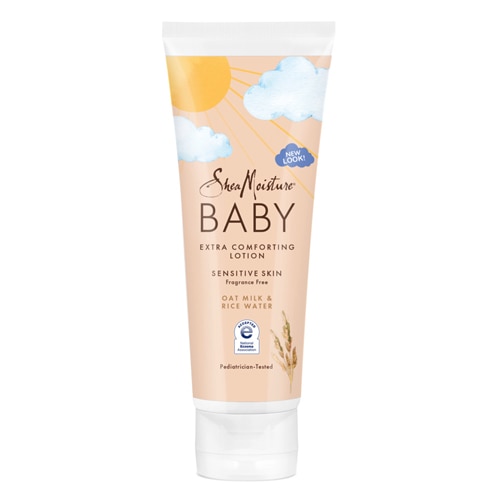 Dr. Rachel Dawkins, medical director of the Pediatric and Adolescent Medicine Clinics at the Johns Hopkins hospital, notes that essential oils aren’t regulated by the U.S. Food and Drug Administration (FDA) and that safety studies on these products are limited.
These oils are concentrated extracts from the flowers, leaves, seed, bark, roots or peel of a plant, Johns Hopkins explains. Common essential oils include tea tree, eucalyptus, lavender, peppermint, spearmint, lemon, orange and grapefruit.
According to Children’s Hospital of Philadelphia, four aromatherapy oils have been determined to be safe and effective for children over age 5: lavender, peppermint, orange and ginger.
Dr. Rachel Dawkins, medical director of the Pediatric and Adolescent Medicine Clinics at the Johns Hopkins hospital, notes that essential oils aren’t regulated by the U.S. Food and Drug Administration (FDA) and that safety studies on these products are limited.
These oils are concentrated extracts from the flowers, leaves, seed, bark, roots or peel of a plant, Johns Hopkins explains. Common essential oils include tea tree, eucalyptus, lavender, peppermint, spearmint, lemon, orange and grapefruit.
According to Children’s Hospital of Philadelphia, four aromatherapy oils have been determined to be safe and effective for children over age 5: lavender, peppermint, orange and ginger.
How to safely use essential oils
Johns Hopkins points out that children are more likely than adults to suffer harmful reactions to essential oils. The hospital lists these don’ts regarding essential oils:- Don’t use undiluted oils directly on the skin. Safe dilutions for kids generally range from 0.5% to 2.5%, depending on a child’s condition, age and weight.
- Don’t add undiluted oils to bathwater. Oil and water don’t mix, so the concentrated form could irritate the skin.
- Don’t swallow oils, as they can be toxic. Swallowing of essential oils by children under age 15 represents one of the top 25 categories for calls to poison control centers in the U.S.
- Don’t overuse oils. Be careful about how often and how much you use on your child. For example, don’t apply a lotion that contains lavender and then apply an essential oil.
- Don’t use peppermint oil on children less than 30 months old. If you do so, it could increase the risk of seizures.
- Don’t use essential oils near the eyes, ears and nose.
- Don’t forget to do a patch test. Before using an oil on your child’s skin, apply it on a small area of skin and wait 24 hours to see whether the child suffers an adverse reaction.
- Don’t use essential oils to replace medical care.
What are the benefits of essential oils?
Some clinical studies suggest that essential oils can alleviate a variety of symptoms, Johns Hopkins says. But before using essential oils on your child, ask your child’s primary care physician possible allergic reactions, respiratory problems or interference with medications. According to Johns Hopkins, situations where essential oils might benefit a child include:- Relieving anxiety.
- Alleviating nausea and fatigue.
- Easing headaches.
- Repelling insects.
- Helping treat insomnia.
How to properly use essential oils
Johns Hopkins says essential oils can be applied to the skin, inhaled or diffused. “Always, always, always dilute essential oils with a carrier oil, such as coconut oil or almond oil, when topically applying them on your kids. Their skin is more sensitive and using oils ‘neat’ can lead to sensitivities and rashes,” Alegria wrote. Here are dilution recommendations for children by age:- 3 months to 24 months — 0.25% to 0.5%
- 2 to 6 years — 1% to 2%
- 6 to 15 years — 1.5%-3%
- 16 and over — 2.5% to 5%
Skepticism about essential oils
Although essential oils might help children, some medical professionals question the benefits. Dr. Justin Smith, a pediatrician at Cook Children’s Health Care System in Fort Worth, Texas, told The New York Times in 2019 that in recent years, parents increasingly have asked whether inhaling essential oils, consuming them or rubbing them onto the skin can treat a variety of children’s ailments, including cough, congestion and fever. But little, if any, evidence supports claims about the healing properties of essential oils, Smith said. “Little is known about how these oils might affect young, growing bodies, but there is some evidence that they can cause harm,” the Times noted. Major medical organizations like the American Academy of Pediatrics and the American Academy of Family Physicians haven’t made recommendations about children’s use of essential oils, according to the Times.Shopping for essential oils
Vanessa Battista, a pediatric nurse practitioner at Children’s Hospital of Philadelphia, says that when you’re shopping for essential oils, keep an eye out for five pieces of information on the label:- Common name of the plant (such as lavender)
- Latin name (Lavandula angustifolia is the Latin name for English lavender)
- Part of the plant used to make the oil (such as leaf, flower, seed or root)
- Country of origin
- How the oil was extracted (such as steam distilled)
Featured products:

 SpaRoom Ocean Mist Essential Oil Diffuser
SpaRoom Ocean Mist Essential Oil Diffuser




